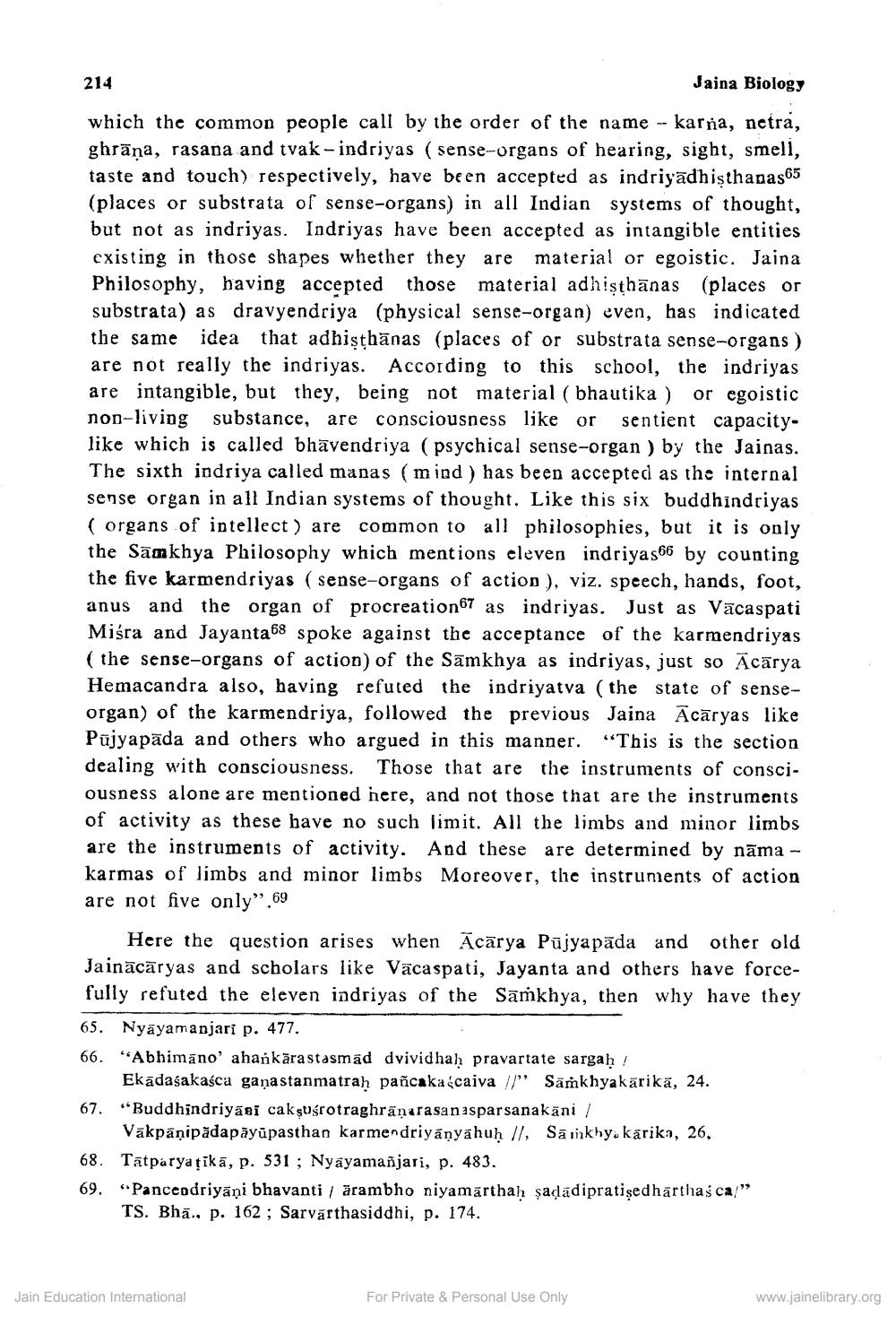________________
214
Jaina Biology
which the common people call by the order of the name -- karna, netra, ghräna, rasana and tvak - indriyas ( sense-organs of hearing, sight, smell, taste and touch) respectively, have been accepted as indriyadhisthanas65 (places or substrata of sense-organs) in all Indian systems of thought, but not as indriyas. Indriyas have been accepted as intangible entities existing in those shapes whether they are material or egoistic. Jaina Philosophy, having accepted those material adhisthānas (places or substrata) as dravyendriya (physical sense-organ) even, has indicated the same idea that adhisthānas (places of or substrata sense-organs ) are not really the indriyas. According to this school, the indriyas are intangible, but they, being not material (bhautika ) or egoistic non-living substance, are consciousness like or sentient capacitylike which is called bhāvendriya (psychical sense-organ ) by the Jainas. The sixth indriya called manas (mind) has been accepted as the internal sense organ in all Indian systems of thought. Like this six buddhindriyas ( organs of intellect) are common to all philosophies, but it is only the Sāmkhya Philosophy which mentions eleven indriya 566 by counting the five karmendriyas ( sense-organs of action ), viz. speech, hands, foot, anus and the organ of procreation67 as indriyas. Just as Vācaspati Miśra and Jayanta 68 spoke against the acceptance of the karmendriyas ( the sense-organs of action of the Samkhya as indriyas, just so Äcārya Hemacandra also, having refuted the indriyatva (the state of senseorgan) of the karmendriya, followed the previous Jaina Ācāryas like Pūjyapāda and others who argued in this manner. “This is the section dealing with consciousness. Those that are the instruments of consciousness alone are mentioned here, and not those that are the instruments of activity as these have no such limit. All the limbs and minor limbs are the instruments of activity. And these are determined by nāma - karmas of limbs and minor limbs Moreover, the instruments of action are not five only” 69
Here the question arises when Acārya Pūjyapāda and other old Jainācāryas and scholars like Vācaspati, Jayanta and others have forcefully refuted the eleven indriyas of the Sāmkhya, then why have they 65. Nyāyamanjari p. 477. 66. "Abhimano' ahankärastasmād dvividhah pravartate sargaḥ !
Ekādasakasca gana stanmatrah pañcaka caiva //" Samkhyakärikā, 24. 67. "Buddhindriyasi cakşusrotraghränarasanasparsanakāni /
Vākpānipädapāyūpasthan karmendriyányáhuh II, Sārnkhy.kárika, 26. 68. Tātparyaţikā, p. 531 ; Nyayamañjari, p. 483. 69. “Panceodriyāni bhavanti / ārambho niyamārthah şadādipratișed härthasca/"
TS. Bhā.. p. 162; Sarvārthasiddhi, p. 174.
Jain Education International
For Private & Personal Use Only
www.jainelibrary.org




